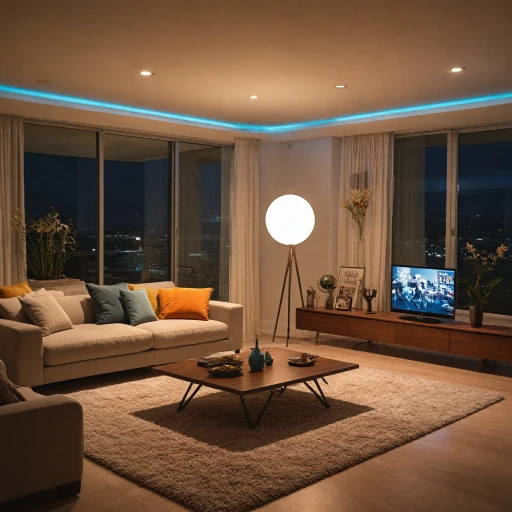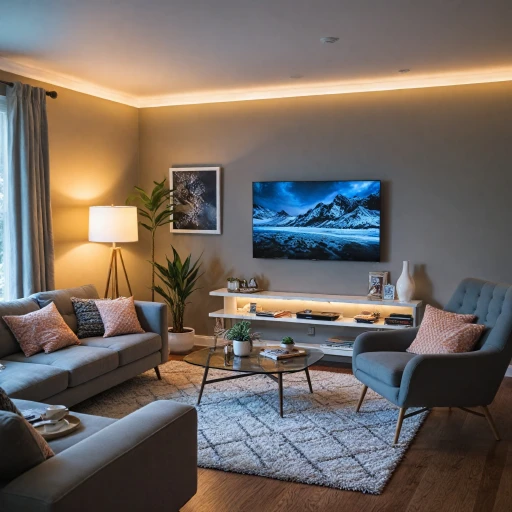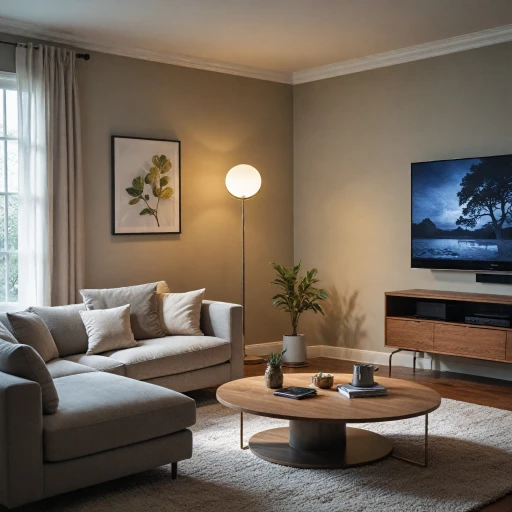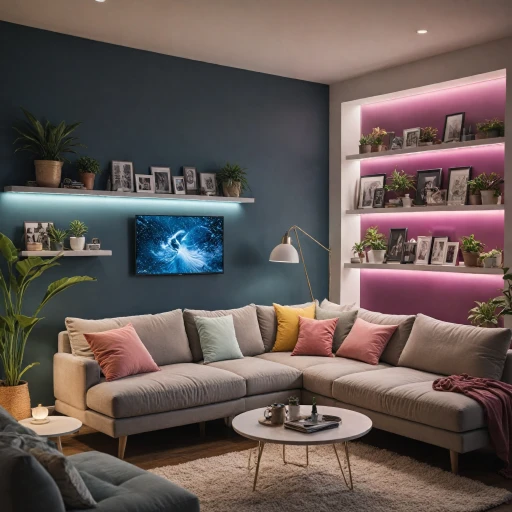Understanding LED Light Technology
Exploring LED Light Technology
LED technology has revolutionized lighting, offering an energy-efficient and versatile alternative to traditional lighting methods. LEDs, or Light Emitting Diodes, are known for their ability to produce bright light while consuming significantly less power, making them an ideal choice for various applications, from basic illumination to elaborate light displays.
One of the significant advantages of LED lights is their adaptability. Whether you're looking to install a single color light strip or a complex setup involving RGB LEDs, the technology supports an array of options that can easily be tailored to suit any space. With products ranging from simple light strips to sophisticated smart bulbs, LEDs cater to all lighting needs, offering flexibility in colors (RGB, RGBW), brightness levels, and even white light variations like CCT (Correlated Color Temperature).
When opting for LED lights, it's essential to consider the power requirements and voltage compatibility. LED strips and other fixtures operate under constant voltage, ensuring steady light output without flicker. Additionally, many LED products integrate with remote controllers and smart apps, allowing users to control their lighting wirelessly.
For those interested in upgrading their lighting experience, incorporating LEDs with remote control capabilities offers a simple yet effective way to enhance ambiance and convenience. By understanding the key features of LED technology, you can explore various options, including the comprehensive guide on enhancing your home with a wireless remote control switch for smart lighting. This knowledge will prove beneficial as you navigate the setup and explore further sections on both controllers and installation tips.
The Role of Remote Controllers in Smart Lighting
The Importance of Remote Controllers in Smart Lighting
In the evolving landscape of smart lighting, remote controllers have become indispensable. These devices bridge the gap between cutting-edge LED technology and user-friendly interfaces, allowing you to manage your lighting environment with ease. Whether you're using LED strip lights or RGB LED panels, the remote control is your gateway to a customizable lighting experience.
Remote controllers enable you to adjust brightness, switch between colors, and even set mood lighting with just a click. This is particularly useful for RGB and RGBW lights, where the spectrum of colors can transform a room's ambiance instantly. The ability to control lights wirelessly means you can manage your lighting from anywhere in the room, enhancing convenience and efficiency.
Types of Remote Controllers
When it comes to remote controllers, there are several options to consider:
- Touch Panel Remotes: These provide a sleek interface for adjusting light intensity and color. They are perfect for those who prefer tactile feedback.
- App-Based Controllers: With the rise of smart home technology, many LED controllers now offer app integration. This allows for remote control via your smartphone, adding a layer of convenience and connectivity.
- Traditional Remote Controls: These are simple, handheld devices that offer basic functions such as on/off, dimming, and color switching.
Choosing the right remote controller depends on your specific needs and the type of LED light setup you have. Consider factors like ease of use, compatibility with your existing lights, and whether you need additional features like WiFi connectivity or a touch panel interface.
As you explore the world of smart lighting, understanding the role of remote controllers will help you make informed decisions. Whether you're setting up a new series of LED strip lights or upgrading your existing setup, the right remote controller can significantly enhance your lighting experience.
Features to Look for in a Remote Controller
Key Features for Optimal Light Control
When selecting a remote controller for your LED lighting system, several features should be at the forefront of your considerations. Knowing what to prioritize can significantly enhance your smart lighting experience, making it both efficient and enjoyable.
- Compatibility: Ensure the remote is compatible with your LED lights. Whether you're using RGB, RGBW, or CCT LED strips, the controller should support the light type and match the voltage and power supply requirements.
- Wireless Connectivity: Look for a remote control that offers wireless options such as wifi or Bluetooth. This feature provides seamless control over your lights, allowing adjustments from different locations within your space.
- Color and Brightness Control: The ability to control and customize the color and brightness of your LED lights is crucial. A quality controller should allow you to switch between single color, RGB, and RGBW modes and offer a dimmer function for brightness adjustments.
- User Interface: A user-friendly interface is vital for a smooth lighting experience. Whether it's a tactile touch panel or an intuitive mobile app, the controller should make it easy to navigate through your lighting settings.
- Programmable Features: Some remotes come with programmable features, allowing you to set schedules or scenes for different times of the day. This automation can enhance convenience and energy efficiency.
- Future-Proofing: As smart lighting technology evolves, it's wise to choose a product that can integrate with future smart home systems. Constant updates on firmware and compatibility with new devices can keep your setup relevant.
Understanding these features is essential for making an informed choice that aligns with your needs and preferences. For more advanced functionalities, consider remote controllers that integrate waterproof toggle switches for enhanced durability and versatility. Exploring the benefits of these specialized switches can offer added value to your smart lighting system.
Installation and Setup Tips
Steps for Setting Up and Installing Remote-Controlled LED Lights
Installing and setting up remote-controlled LED lights can be a straightforward process if you take it one step at a time. Here’s how to do it efficiently, ensuring that your LED lights are ready to transform your space beautifully. 1. Choose the Right Components Before diving into the installation, make sure you have all the necessary hardware and understand your product specifications. You'll need:- LED strip lights compatible with remote control.
- A reliable remote controller. Look for controllers supporting functions like RGB, RGBW, and CCT for a versatile color range.
- Appropriate power supply. Ensure it matches the constant voltage requirements of your LED strips.
- Install the LED controller between the power supply and the strips to manage power distribution effectively.
- Use the adhesive backing of the strips or mounting supports provided for stable placement.
Troubleshooting Common Issues
Solving Common Smart Light Issues
Even with the advanced technology available today, LED lights and their remote controllers can sometimes present unexpected challenges. To help maintain the function and magic of your lighting setup, here’s a guide for addressing common issues.
Connection Problems
It's not uncommon for smart LED lights to occasionally struggle with connectivity, especially when using a remote control, wireless app, or wifi connection. Ensure that the LED controller and your smart device are within range, and check if your network is functioning properly. Rebooting your router or resetting the LED controller can sometimes resolve persistent issues.
Power Supply and Voltage Concerns
Always verify that your LED strips or lights are matched with the correct power supply and constant voltage. Mismatched power may lead to insufficient lighting or damage to your LED lights. Double check both the wattage and voltage recommended by the product specifications to prevent any potential dangers.
Inconsistent Light Colors or Functionality
If your RGB, RGBW, or RGB CCT LED lights display incorrect colors or fail to respond to commands, it could be due to a faulty LED strip or controller. Try resetting the remote controller or adjusting the settings on your app. Ensure all strips are properly connected, as a loose connection could be the culprit.
Dimming Issues
Your dimmer not adjusting the brightness correctly? This issue might arise from using an incompatible dimmer switch with your particular light strips. Verify that your dimmer switch is designed for use with LED strips, and consult the products’ specifications for compatibility.
Remote Control Interference
Sometimes, external factors may interfere with your remote’s signal to your light controller. Remove any obstructions between your remote and the light source, and ensure there aren’t conflicts with other devices using similar frequencies.
Remember, the key to effective troubleshooting lies in understanding the intricacies of your smart lighting setup. For comprehensive insights on smart lighting advancements and installations, exploring relevant resources can provide a deeper understanding.
Future Trends in Smart Lighting
Emerging Innovations and Transformations in Smart Lighting
In recent years, smart lighting technology has evolved significantly, driven by the demand for more convenient, efficient, and flexible lighting solutions. As we look towards the future of smart lighting, several trends are shaping the industry:- Integration with Smart Home Systems: More consumers are looking for integrated solutions where their smart LED lights seamlessly connect with other smart home devices. This means better compatibility with systems like Amazon Alexa, Google Home, and Apple HomeKit, offering a cohesive, voice-controlled experience.
- Advancements in Wireless Technology: With the growing adoption of Wi-Fi and Bluetooth-enabled devices, wireless control systems for LED strip lights and light strips are becoming more advanced. This facilitates better connectivity and control, allowing users to operate their lights from anywhere through reliable apps.
- Energy Efficiency and Sustainability: As environmental concerns rise, the focus on creating energy-efficient LED lights with lower power consumption is a key trend. This not only reduces the environmental impact but also lowers household energy costs. Products with constant voltage and advanced dimmer functionalities are increasingly popular for their efficiency.
- Customizable Color Options: RGB and RGBW options continue to expand, offering users a broader palette for personalization. Innovations in CCT LED technology allow for color temperature adjustments, making it easy to switch from warm to cool lighting according to the mood or activity.
- Touch Panel and Remote Control Innovations: As detailed in the sections about controllers and setup, touch panel interfaces, and remote controls are becoming more intuitive. They provide a more user-friendly and responsive way to control LED lights, enhancing the overall user experience.
- Predictive and Adaptive Lighting: Emerging smart lighting systems aim to incorporate AI-driven technologies for predictive and adaptive illumination. This means lighting that can automatically adjust based on occupancy, time of day, and personal preferences, optimizing both user satisfaction and energy use.




